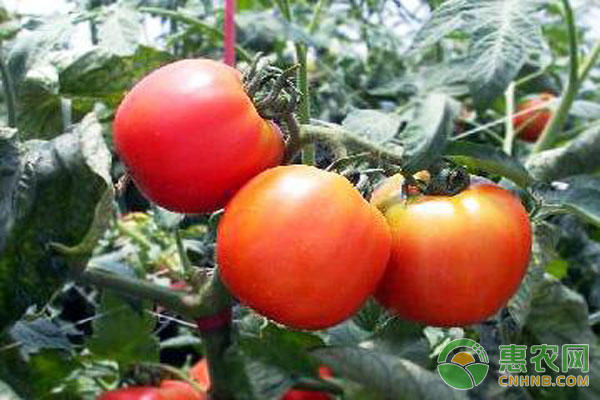Tomatoes, also known as tomatoes, are rich in nutrients, can be eaten raw food, can be processed into tomato sauce, juice and so on. Tomato is one of the most widely cultivated fruits and vegetables in the world. It is widely cultivated all over China, and the planting area is also expanding. In addition to large-scale facility cultivation, there are large-scale greenhouses and greenhouse cultivation.
However, with the large-scale cultivation, the problem of tomato pests and diseases is constantly increasing. Common diseases such as viral diseases, bacterial wilt, early blight, late blight, gray mold, leaf mold, leaf spot, root knot nematode, etc.; common pests such as whitefly, cotton bollworm, American leafminer, Aphids and so on. The following is a brief introduction to two pests and diseases.

First, tomato leaf mold
Symptom characteristics: mainly occur on the leaves, which can damage stems, flowers and fruits in severe cases. At the beginning of the disease, some chlorotic spots appeared on the back of the leaves, and later changed into gray or black-purple irregular molds. The front of the leaves turned green and yellow at the corresponding parts. In severe cases, the leaves often appeared dry and curled. Spreading from the lower part of the plant, the fruit is infected, and black round or irregular plaques form near the fruit.
Causes of the disease: Foliar fungus prefers high temperature and high humidity environment, the optimal temperature for onset is 20-25 ° C, and the relative humidity is above 95%. Planting too dense, many years of heavy sputum, untimely release of wind, flooding and other factors will lead to the disease. In the early spring, the incidence of low temperature and rain, continuous rain or plum rain is relatively high, and the incidence rate is higher in autumn and autumn in autumn and autumn.
Chemical control: use 20% pyrimethanil suspension 600 times solution, 50% procymidone WP 600 times solution, 40% silicon carbazole carbendazim WP 2500 times solution, 47% spring erythromycin 800 times Liquid, etc.

Second, the American spotted fly pests
Hazard characteristics: Both adults and larvae are mainly harmful to the leaves. Female adults fly and stab the leaves of plants to feed and lay eggs. The larvae sneak into the leaves and petiole to produce irregular snake-shaped white curves.
Control method:
1. Biological control: interplanting and cropping with crops that are not endangered by the American leafminer.
2, physical control: the use of the yellowing of Liriomyza sativa, using yellow sticky board to trap.
3. Chemical control: 1.8% avermectin 800 times solution, 48% chlorpyrifos 1500 times solution, 10% muscimol 800 times solution.
The above is about the prevention and treatment of related diseases during tomato planting. I hope to help everyone. For more details, please pay attention to the Hui Nong School.
The production and quality of enzyme preparations produced by plants are unstable due to the influence of growth area, season, climate, etc. The enzymes produced by animals are mainly extracted from the glands of slaughtered livestock, and the source is limited; only enzymes produced by microorganisms can meet the needs of any scale, with high yield and stable quality. Microbial enzyme preparations can not only replace the main types of animal and plant enzyme preparations with the same performance, but also produce high-temperature-amylases that act as catalysts at 100°C and detergent proteases that act at pH 10-12. In the 1940s, the microbial enzyme preparation industry developed rapidly. At present, the production of enzyme preparations is mainly based on deep fermentation, supplemented by semi-solid fermentation, and the ability of the strains to produce enzymes has also been greatly improved. The immobilized enzyme and immobilized cell technology developed in the 1960s and 1970s enabled the enzyme to be used repeatedly and continuously reacted, and its scope of application was also expanded. At present, in addition to the food and textile industries, microbial enzyme preparations are also used in daily chemistry, chemicals, pharmaceuticals, feed, papermaking, building materials, biochemistry, clinical analysis and other aspects, becoming an important sector of the fermentation industry.
enzyme preparation,food additives,Papain,lactase,lipase,lysozyme,bromelain,protease,laccase
PYSON Co. ,Ltd. , https://www.pysonbio.com
